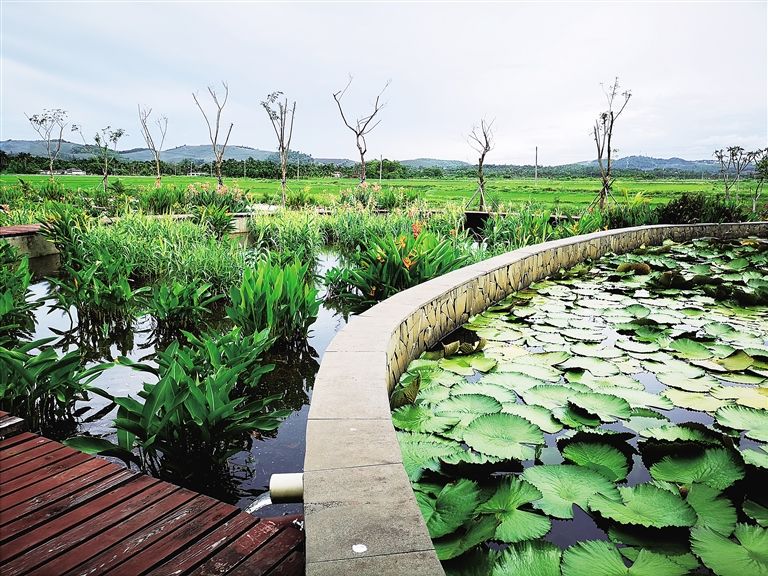What are the ecological water treatment methods for aquaculture discharge?
The nutrient rich substances that occur during the feeding process mainly enter the external environment through the discharge of water, and have become one of the primary non-point source pollutants. The treatment and reuse or qualified discharge of water discharged from aquaculture is an important issue in pond farming production. Nowadays, ecological treatment methods are generally used for the treatment of livestock discharge water, and there are also examples of using biochemical, physical, chemical and other methods for comprehensive treatment.
(1) Ecological ditch is an ecological purification system constructed using the inlet and outlet channels of a breeding farm, consisting of a variety of animals and plants, with the function of purifying water bodies and producing crops. The biological arrangement method of ecological ditches generally involves cultivating submerged plants and placing shellfish at the bottom of the pathway, cultivating emergent plants around the pathway, placing biological floating beds and floating plants on open water surfaces, releasing filter feeding and omnivorous aquatic animals in the water, and proliferating algae on the canal walls and shallow water areas.

(2) Artificial wetland is an artificial ecosystem that mimics natural wetlands. It is similar to natural swamps, but constructed and controlled by humans. It is a water treatment ecosystem in which one or more media such as stones, sand, soil, and coal slag are artificially mixed into a matrix according to a certain proportion, and selectively implanted with plants. The primary components of artificial wetlands are: artificial substrates; Aquatic plants; Microorganisms.
The purification effect of artificial wetlands on water bodies is the result of the combined effects of substrate, aquatic plants, and microorganisms. Artificial wetlands can be divided into two types based on the activity methods of water bodies: surface flow artificial wetlands and subsurface flow artificial wetlands. (3) Ecological purification pond is a pond similar to an ecological ditch, and its purification principle is consistent with that of a biological oxidation pond. Economic aquatic plants can be cultivated in the pond to absorb and purify nutrients such as nitrogen and phosphorus in the water; Place filter feeding fish, shellfish, etc. to absorb debris, organic matter, etc. in the water discharged from feeding.
The article originates from: Natural Ecological Water Purification System http://www.scneng.com.hk
-
06-11
"Environmental Doctor" Du Siyuan: Environmental Protection is a Lifestyle Attitude
There is a Hong Kong compatriot in Jiangmen who often frequents various farms and plantations, walks in mechanical factories, and is seen by others as the nemesis of environmental problems. He conside
-
03-16
Deodorant manufacturer: Deodorants reduce soil pollution
Waste is a chaotic mixture of various components. The accumulation of debris on the surface of soil can cause some chemical reactions, releasing harmful gases, which can lead to soil pollution and eve
-
12-01
Deodorant Manufacturers: Differences between Microbial Deodorants and Traditional Deodorants
The waste that is not needed in our daily life and work is called waste. Due to the large amount of waste discharged and the complex categories, there are great difficulties in reducing waste and deod
-
11-08
Application of Deodorant Manufacturers in Domestic Waste Treatment
Garbage is the waste generated in everyone's daily life and work. Due to its large discharge volume and complex and diverse composition, it poses great difficulties in reducing and deodorizing wa
